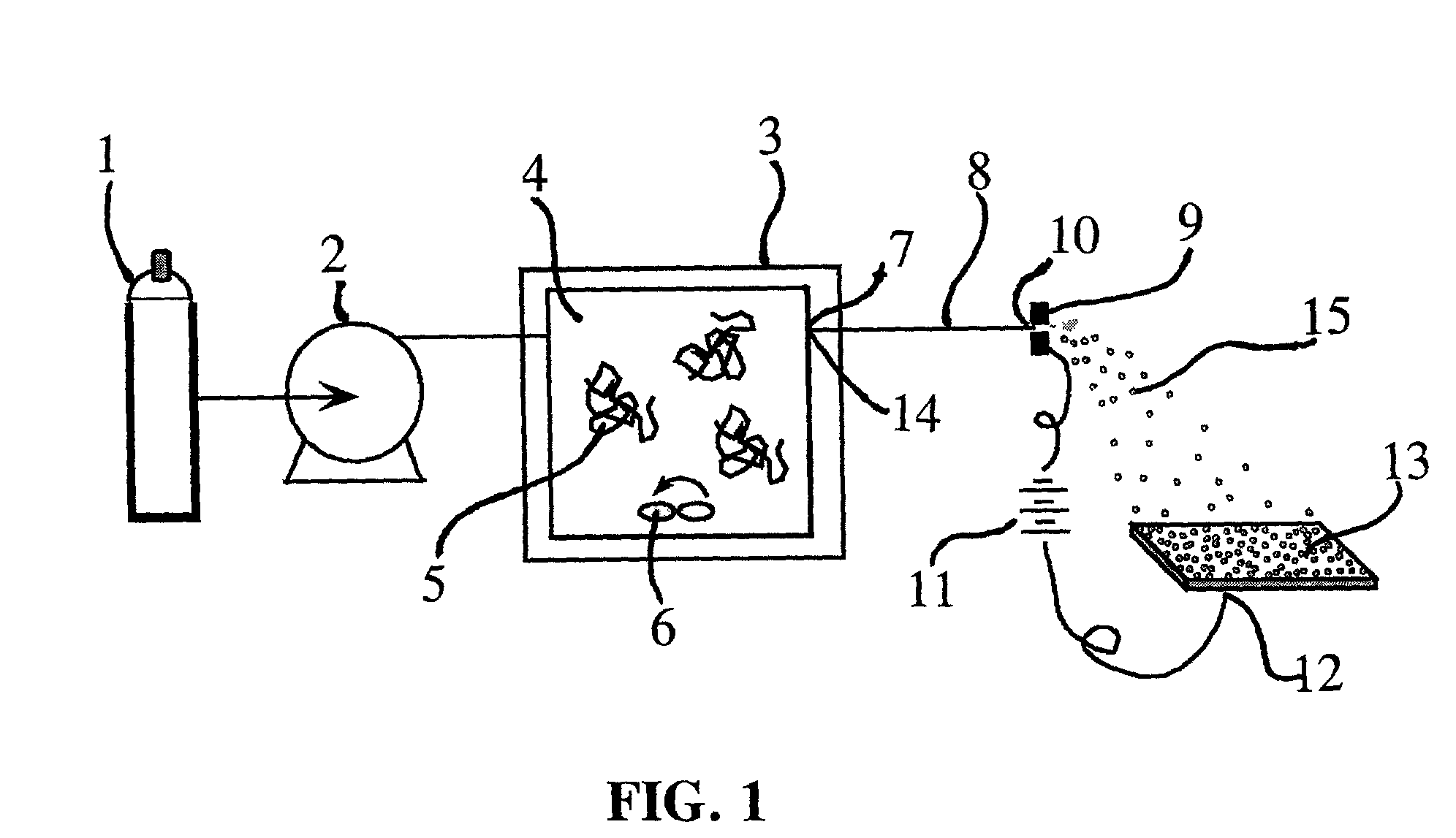Methods for producing films using supercritical fluid
a technology of supercritical fluid and film, applied in the direction of solvent extraction, separation process, filtration separation, etc., can solve the problems of consuming energy, and affecting the quality of films
- Summary
- Abstract
- Description
- Claims
- Application Information
AI Technical Summary
Problems solved by technology
Method used
Image
Examples
example 1
[0062] An ultra-fine wire mesh screen (wire diameter of about 66 microns) was coated with a thin layer of fluoropolymer particles having diameters of about 200 nm via electrostatic deposition of the RESS-generated fluoropolymer particles. Specifically, 46.1 mg of a copolymer of tetrafluoroethylene / hexafluoropropylene / vinylidene fluoride (THV 220A) was dissolved in supercritical carbon dioxide at 110.degree. C. and 14,000 psi. The resulting solution was sprayed onto the screen at a flow rate of about 3 ml / minute. The electrode was charged to a voltage that provided a field strength of about 2.5 kV / cm.
[0063] The particle-coated screen then was placed into a pressure vessel and heated to 40.degree. C. Supercritical CO.sub.2 was introduced into the pressure vessel at a pressure of approximately 2000 psi. After immersion under these conditions for about 10 minutes the pressure was released and the screen removed.
[0064] Inspection of the screen under a high power microscope showed that th...
PUM
| Property | Measurement | Unit |
|---|---|---|
| temperature | aaaaa | aaaaa |
| mean particle size | aaaaa | aaaaa |
| mean particle size | aaaaa | aaaaa |
Abstract
Description
Claims
Application Information
 Login to View More
Login to View More - R&D
- Intellectual Property
- Life Sciences
- Materials
- Tech Scout
- Unparalleled Data Quality
- Higher Quality Content
- 60% Fewer Hallucinations
Browse by: Latest US Patents, China's latest patents, Technical Efficacy Thesaurus, Application Domain, Technology Topic, Popular Technical Reports.
© 2025 PatSnap. All rights reserved.Legal|Privacy policy|Modern Slavery Act Transparency Statement|Sitemap|About US| Contact US: help@patsnap.com


